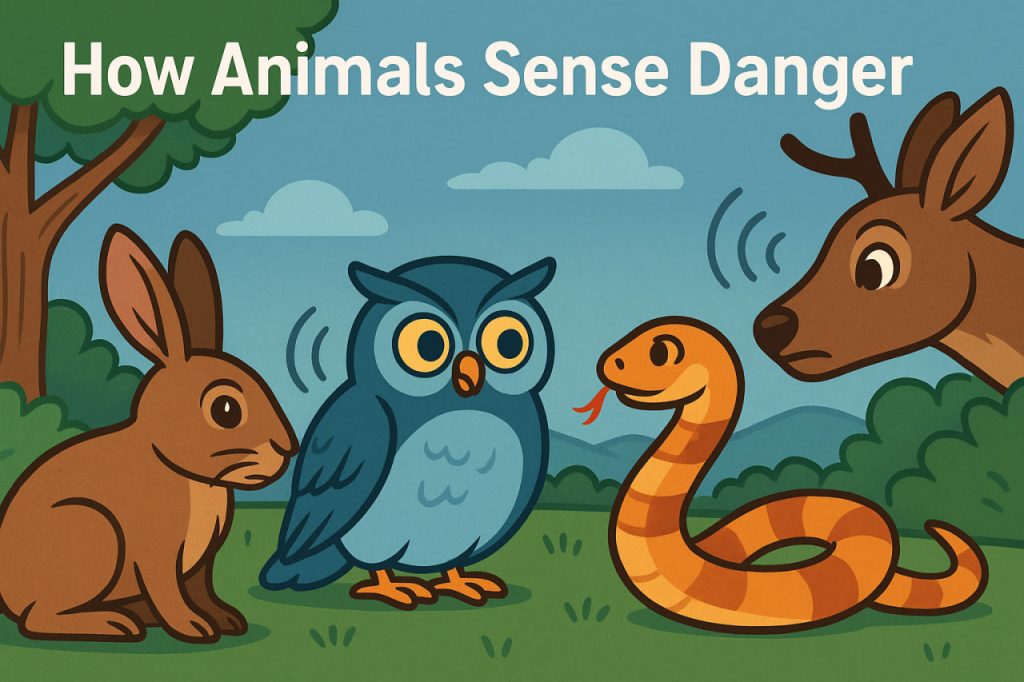Animals live in a world full of predators, environmental threats, and unpredictable changes. To survive, many species have developed extraordinary senses and behaviors that allow them to detect danger early and react quickly. From detecting vibrations in the ground to sensing changes in the air, animals use both physical and behavioral tools to stay safe.
Enhanced Senses in the Animal Kingdom
Many animals have heightened senses far beyond human capabilities. These specialized adaptations help them detect threats before they become fatal.
- Hearing: Some animals, like elephants and bats, can hear infrasound or ultrasound—frequencies beyond human hearing. This allows them to detect distant movement or the approach of predators.
- Smell: Dogs, bears, and snakes use their powerful sense of smell to detect other creatures or even subtle changes in their environment.
- Vision: Birds like hawks can see small movements from great distances. Nocturnal animals often have night vision to spot threats in the dark.
- Touch and vibrations: Insects and some amphibians feel ground vibrations or changes in air pressure, which can signal approaching footsteps or weather shifts.
These natural abilities are critical for survival, especially in environments where speed and awareness mean life or death.
Instincts and Reflexes
Many animals are born with instincts—automatic responses that help them avoid danger. These can include:
- Fleeing from sudden movements or sounds
- Freezing in place to avoid detection
- Mimicking more dangerous animals (e.g., some butterflies mimic poisonous species)
- Releasing smells or toxins to repel predators (e.g., skunks or poison frogs)
Such behaviors don’t require learning; they’re encoded in the animal’s biology and triggered automatically in response to threats.
Communication and Warnings
Some animals warn each other of danger using signals:
- Alarm calls: Birds, monkeys, and meerkats produce specific sounds to alert their group to different types of threats.
- Body language: Deer raise their tails, dogs growl, and bees perform dances to signal changes in their environment.
- Chemical signals: Ants release pheromones to guide others away from or toward safety.
These communication systems allow for group defense strategies, improving the survival chances of the entire community.
Learning from Experience
While instincts play a big role, many animals can learn from past experiences. For example:
- A rabbit that escapes a predator learns to avoid that area in the future.
- Urban birds adjust to the presence of humans and vehicles by changing their flight patterns.
- Primates teach their young how to recognize and avoid snakes or other threats.
This learning enhances survival by helping animals adapt to changing environments.
Unusual Senses and Abilities
Some species possess extraordinary danger-detection abilities:
- Sharks can detect electric fields from prey or predators.
- Moths can detect ultrasonic calls of bats and change their flight to evade them.
- Frogs and toads may detect changes in air pressure before a storm or earthquake.
- Herd animals like zebras often rely on the alertness of others—if one runs, the rest follow.
These specialized senses make nature incredibly diverse and effective at preparing animals for survival.
Glossary
- Infrasound – Low-frequency sound waves below the range of human hearing.
- Pheromones – Chemical signals used by animals to communicate.
- Instinct – A natural, automatic behavior present from birth.
- Reflex – An immediate, involuntary reaction to a stimulus.
- Predator – An animal that hunts and feeds on other animals.


